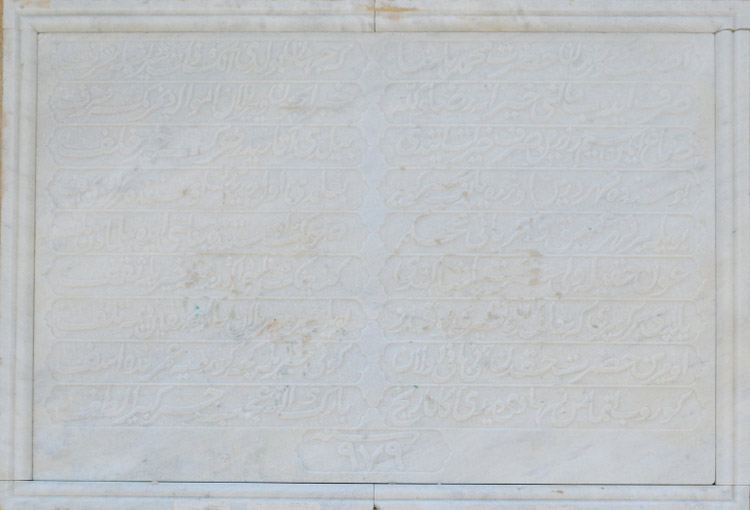
The Bridge on the Drina is a heritage of the Grand Vizier Mehmed Pasha Sokolovic (in Turkish Sokollu Mehmed Paşa, 1505. or 1506-1579). He is one of the greatest Ottoman war generals by origin from Bosnia. He was born in the village of Sokolovići near Rudo in 1505. or 1506, as a child of Orthodox parents.
At that time, there was a tradition known as Devsirme, or „The contribution in blood”. Serbian children were taken away by force to Turkey where they would be converted to Islam and taught in their military schools to become Janissaries, the elite soldiers of the Turkish Empire. So Bajica Sokolovic was also taken as a child from the surroundings of Višegrad and was given the name Mehmed.
He would later become an officer of the Ottoman army thanks to his skills, and at top of his power he became the Grand Vizier, equal to the Prime Minister, by today`s standards.
At the highest peak of his rule, he ordered a bridge to be built like no other in Višegrad on the Drina River.
The bridge was built in the period from 1571 to 1577 by at that time, the most famous Turkish architect Koca Mimar Sinan.
The bridge consists of 11 arches with mild ascend towards the middle section and it has a descending ramp on the left bank.The total length is 179.5 m, height above the normal water level of the river is 15.40 m and the width of the bridge is 6.30 m.There are extensions above the sixth pillar on both sides of the bridge.
In the middle of the bridge a sofa was built and it was designed for passengers to rest and across from the sofa a stone portal was built. There are two plates made of white marble with verses of the poet Nihadi in Arabic alphabet, talking about the constructor and the year of construction.
meow
Younger chronogram on lower plate written in Arabic script:

1 – Noble and honest Mehmet Pasha,
2 – with whose presence the world is honoured
3 – spent his property to satisfy God
4 – no one can say that property used for good deeds is wasted
5 – During his life the vizier spent money for establishing endowments
6 – He knew that good deeds are successors to all
7 – In Bosnia, over River Drina he founded a large bridge
8 – There was no line of arches over that river
9 – Over such a deep river with strong currents
10 – he had to build without a predecessor
11 – Mehmet Pasha succeeded in crowning his home with beneficence
12 – He built a bridge which has no counterpart in the world
13 – Do not consider that the money spent for this endowment is in vain
14 – Let the days bestowed to him by God spent in
15 – wellbeing and charity
16 – Seeing the completion of the bridge, Nihadi said the tarih (date)
17 – Let God bless this wonderful, great bridge, the most beautiful!
979 H. / 1571/72
meow
Older Chronogram on upper plate written in the jali naskh script:

“During the reign of the ruler of the world Murad Khan, son of Selim,
the benefactor lord Mehmed Pasha,
who served as Grand Vizier loyal to three rulers,
created the grandest of legacies, may the Lord God receive it!
With pure intent he built with his own resolve
a great bridge over the river Drina.
The structure is so exquisite that all who see it
regard it as one of the pearls of the river,
with the vault of the heavens as its shell.
God grant that the edifice of his fortune and his life be strong,
and grant him whatever he desires in this and the everlasting world.
Nihadi told me this chronogram, may those who see it be blessed:
“Mehmed Pasha built this bridge over the water.”
Year 985. (1571.)
The bridge was fully repaired in the period from 1949. to 1952.
In 2007, bridge was entered in the UNESCO list of world cultural heritage, as a bridge with big cultural impact, and also as a best representative of a classical ottoman style in bridge making.
UNESCO criteria for entering the list (www.unesco.org):
Criterion (ii): Located in a position of geostrategic importance, the bridge bears witness to important cultural exchanges between the Balkans, the Ottoman Empire and the Mediterranean world, between Christianity and Islam, through the long course of history. The management of the bridge and repairs made it to have also involved different political and cultural powers: after the Ottomans came the Austro-Hungarians, the Yugoslav Federation, and the Republic of Bosnia and Herzegovina.
Criterion (iv): The Višegrad bridge is a remarkable architectural testimony to the apogee of the classical age of the Ottoman Empire, whose values and achievements mark an important stage in the history of humankind.
“The property, principally consisting of the bridge, the access ramp and the two river banks upstream and downstream, is protected by its buffer zone on each bank of the Drina river. The integrity of the bridge is vulnerable but is now adequately protected by the buffer zone and appropriately expresses the values it embodies.”